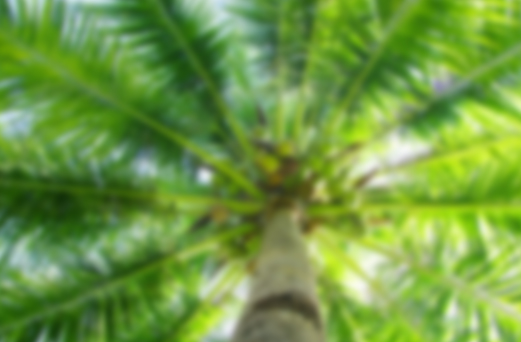
Jamesette Anglin Miss Teen Cayman Islands 2009
The Cayman Islands at one time was completely covered with turtles, marine crocodiles, and lizards, and was a favorite hideout for pirates and buccaneers. Today, the islands present an exclusive atmosphere where tourists seeking seclusion can enjoy some of the Caribbean’s best beaches and underwater sights. The three tiny islands that make up the Cayman are the westernmost islands of the Caribbean. For years, they have been a favorite destination of Americans, but only the ones who can afford it.[1]
With its tax free status, secluded location, and low crime rates, the island is a safe haven for businessmen and tourists alike.[2]
Caymanians are a welcoming bunch. They are proud of their multi-cultural and multi-racial attitudes. They are hospitable people who enjoy making your holiday or trip a memorable experience.[3]
Tourism has grown steadily over the years, although it is carefully controlled to ensure a desirable atmosphere. Hotels are developed with careful planning and buildings aren’t permitted to exceed the height of a palm tree. Everything is well-spaced, even along Seven Mile Beach, which is the most developed part of the islands. This beach is touted by locals as the most beautiful in the Caribbean. Even if they are exaggerating, one thing is certain – the waters at this beach are as clear and blue as any other. It is also shallow and blessed with spectacular reefs, making it a great place for swimmers, snorkelers, and divers.[4]
The Cayman Islands have several attractions for tourists. It is dubbed a mecca for watersports enthusiasts. Because the islands are so small, it is easy to see and do everything the islands have to offer without traveling great distances. Visitors can easily enjoy the history and romance of the Caymans, which have a long association with pirates and brave men with legendary stories about diving and fishing experiences.[5]
Grand Cayman is the main island and typically where most visitors stay. It is also where much of the development in recent years have taken place, so some people prefer Cayman Brac and Little Cayman where tourists are rarer. Owen’s Island is the fourth island. Nestled some 200 meters south of Little Cayman, it is uninhabited and rarely mentioned, but is a favorite place for fishing and picnicking.[6]
Geography
The Cayman Islands are about 770 kilometers (480 miles) south of Miami. Little Cayman and Cayman Brac are about 11 kilometers (7 miles) apart and both are 140 kilometers (90 miles) northeast of Grand Cayman. The largest of the islands both geographically and population-wise is Grand Cayman, which boasts 25,000 residents. Cayman Brac is about 20 kilometers (12 miles) long and is inhabited by about 1,000 residents. Little Cayman is about 11 square miles and is considered the ultimate get-away. Only about 50 people live on the island.[7]
The Cayman Islands are not volcanic, unlike many of the other Caribbean islands. Years ago, the North American tectonic plate was lifted by the Caribbean plate, pushing the islands up from the sea. The three islands were eventually formed from the coral reefs that grew in the shallow waters. This gives the Cayman its advantage. As coral islands, the sand is whiter and finer than its brethrens. There are also a few stunning geological features on the islands such as the “Hell” on Grand Cayman – a rock area that is dated 2.5 million years old. Another feature is the “Wall”, considered one of the best diving spots in the world. Four walls are located off of Grand Cayman, having drops from 11 meters (35 feet) to 1,830 meters (6,000) and visibility up to 60 meters (200 feet).[8]
History
Until 1961, the Cayman Islands were a dependency of Jamaica, which lie 320 kilometers (200 miles) to the southeast. In 1961, a governor was appointed and the Cayman Islands became a British Crown Colony. The islands became a British protectorate in 1670 under the Treaty of Madrid, the terms of which required Spain to transfer Jamaica and Cayman to the British.[9]
Christopher Columbus discovered the islands when he landed on Cayman Brac after getting lost on his journey from Panama to Hispaniola. However, he did not settle or claim the islands and they remained uninhabited until the British arrived. Oliver Cromwell’s army deserters and refugees from the Spanish Inquisition were among the first to live on the islands. Pirates also used it as a haven. Treasures are rumored to be hidden still in some of the caves. Many shipwrecked treasure ships today serve as favorite haunts for divers.[10]
At one time, about 1,000 slaves along with settlers from Wales, Ireland, Scotland, and America lived on the island. The locals today speak a mix of English dialects.[11]
The islands are ruled by a Legislative Assembly that is controlled by an appointed Governor. Members of the assembly are elected by the people. Four of the members are also elected to sit on an Executive Council and three members are chosen to serve the Civil Service. Each member is given specific governing responsibilities.[12]
The Cayman Islands has not always been the famous tax haven it is today. In 1788, ships among a convoy headed from Jamaica to England ran aground near the islands. Nobody drowned thanks to the rescue efforts of the islands. The Legend of the Ten Sails tells the story of how King George III had a royal family member on the ship. He was so grateful that his relative was rescued that he ordered the island forever free from conscription or taxes.[13]
As a tax haven, Cayman attracts numerous financial institutions – over 500 in fact. The island has been careful to limit the number of banks to prevent possible fraud or failure. It is extremely proud of its licensing system, which has seen only three bank failures in the last two decades.[14]
Cayman is sometimes dubbed the second Switzerland because of its rigid laws that emphasize confidentiality. It does, however, have a Mutual Legal Assistance Treaty with the US and Britain that allows disclosures for drug-related crime investigations. It is the largest offshore banking center in the world, home to over 17,000 registered companies and 350 offshore insurance companies.[15]
Tourism is a large part of the islands’ economy, providing 70% of the Cayman’s GDP and 35% of jobs. In recent years, labor has been imported to assist with construction and employment needs. Unfortunately, because many things have to be imported, the cost of living on the island is high.[16]
People
The Cayman Islands remain a loyal British Crown Colony with no desire for gaining independence. English is the island’s official language but it is spoken in a Caymanian dialect that can confuse people. The sounds often come out as singing rather than talking. “V’s” are often pronounced as “W’s”.[17]
The people are a mix of Spanish, Welsh, and English. Some residents are descended from slaves and pirates. The island prides itself on its multi-cultural and multi-racial attitudes. The people are not only hospitable, but also friendly and laid-back. People on the street will approach you to strike up conversations.[18]
When to Go
The peak season is some time between mid-December and mid-April. Hotel prices are higher during this period. The temperatures in the summer are typically around 25°C (77°F). Most of the rainfall occurs between May to October. Hurricane season is usually from August to October. In 1988, Hurricane Gilbert hit the island. The island has an efficient emergency procedure that prioritizes the safety of tourists.[19]
Food
Grand Cayman has a large and diverse variety of restaurants, ranging from luxuriously exclusive to a jerk pork stop. There aren’t as many choices on the smaller islands, where the good restaurants are limited to the hotels. All food is imported mostly from the U.S. [20]
Shopping
Grand Cayman is a great place to shop. The best buys are gold dubloons, gold, fine china, crystal, and photographic equipment. The island is also famous for its perfumes, including its very own “Cayman Caress”. If you are looking for an expensive gift, black coral jewelry fits the bill and is sold widely on the island. You can also buy products from the world’s only turtle farm, but you can’t import them into the U.S. The duty-free shops are mostly found in George Town, where there are plazas and centers selling jewelry, watches, crystals, linens, china, Colombian emeralds, art work, and souvenirs.[21]
References:
Booth, Elizabeth. Jamaica and the Greater Antilles. Swindon: Crowood Press, Ltd, 1991. ISBN: 1852234628.
[1] Booth, 29
[2] Id.
[3] Id.
[4] Id.
[5] Id.
[6] Id. at 30
[7] Id. at 35-36
[8] Id. at 37
[9] Id. at 36
[10] Id.
[11] Id.
[12] Id.
[13] Id. at 36-37
[14] Id. at 37
[15] Id.
[16] Id.
[17] Id. at 35
[18] Id.
[19] Id. at 31
[20] Id. at 33
[21] Id. at 34


Comments